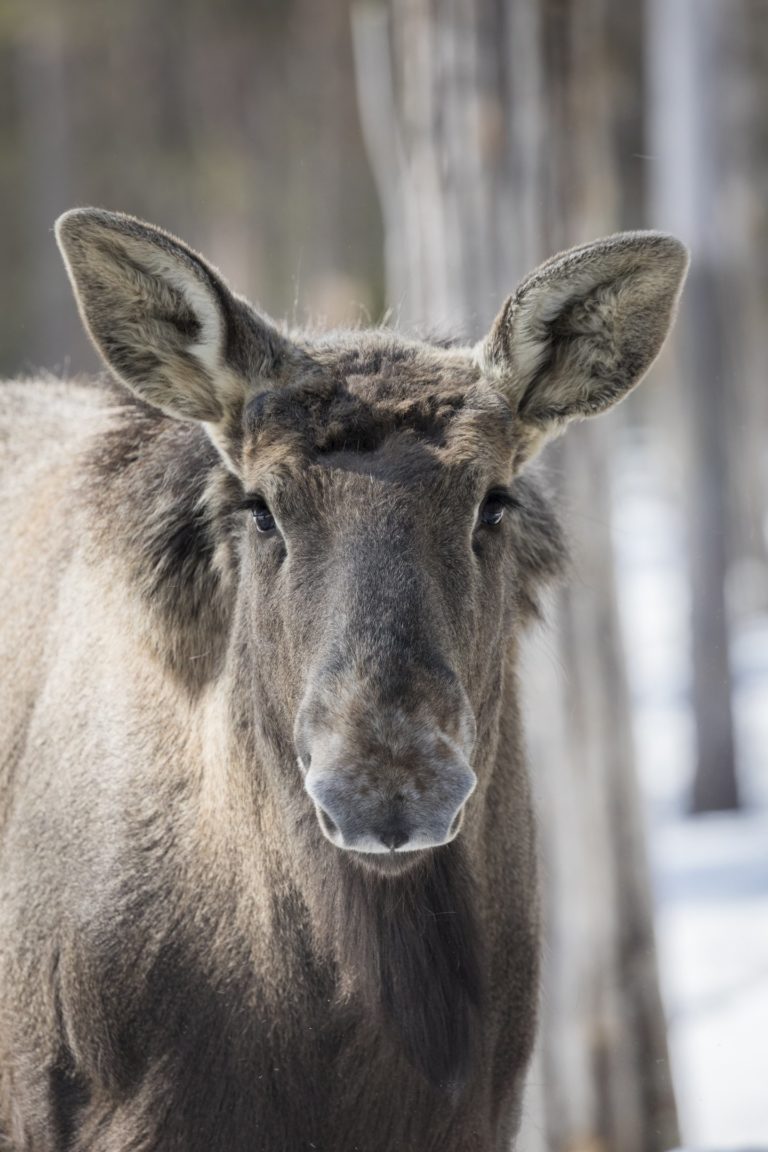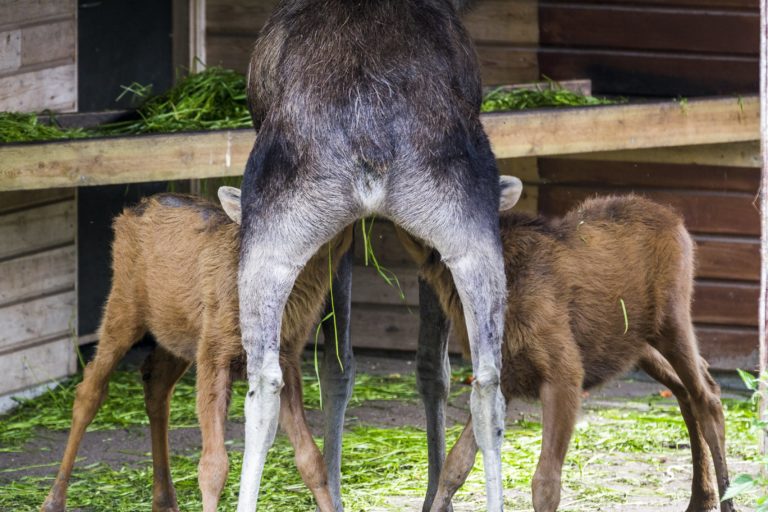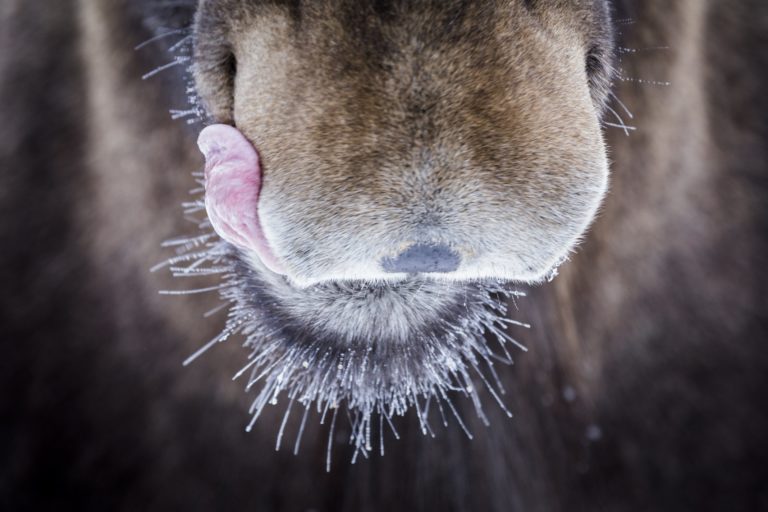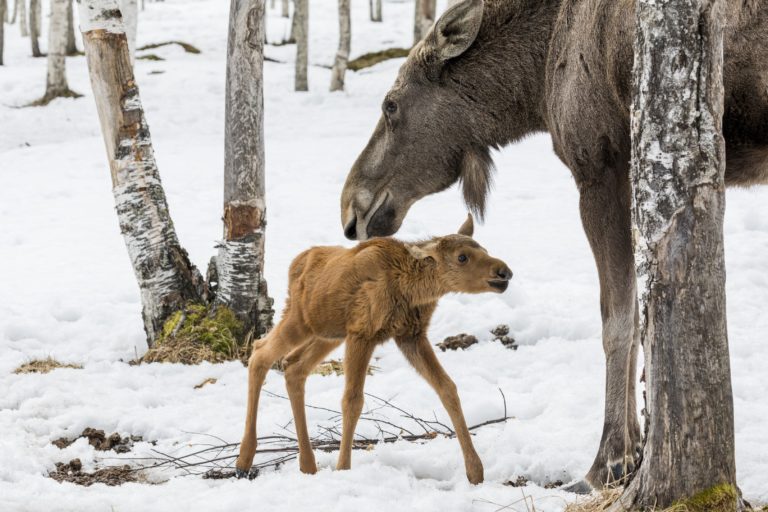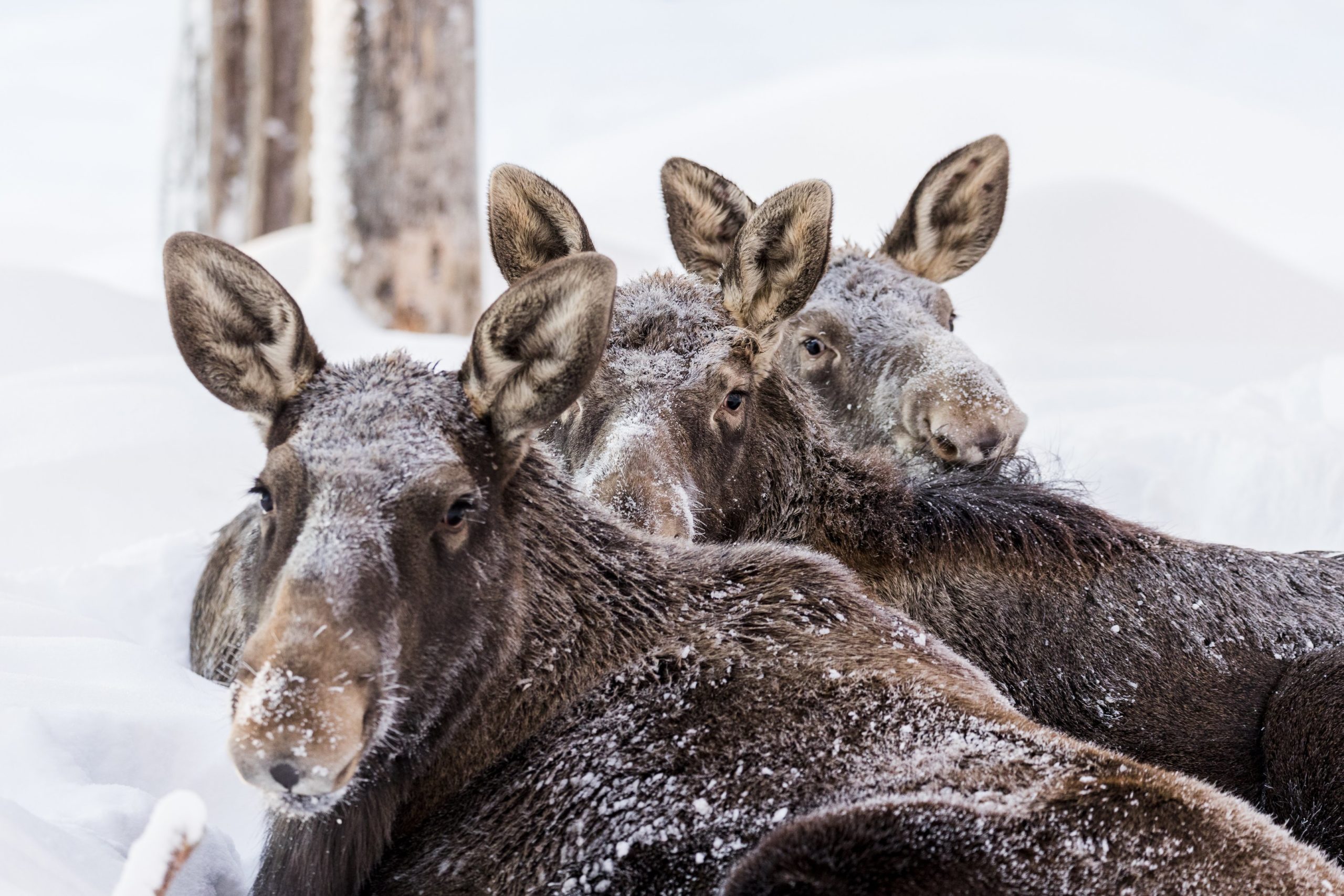
Moose
LIVING HABITS
The moose is one of the largest species in all of Northern Europe and Asia. Moose can be found throughout Finland, except in the bare mountaintops of the mountain regions above the tree line in the northernmost parts of Lapland. Moose thrive where nutrition is abundant, and they can migrate long distances between summer and winter pastures, even up to 100 km. In the summer, moose prefer regions with mostly broad-leaved trees, preferably close to wetlands and waters. In summertime the moose feeds on about 200 different types of plants consisting of grass vegetation, leaves of trees, bushes and sprouts, as well as water plants. In the winter the moose feeds mostly on twigs, brushwood and branches of trees. Forests with pine sapling stands and broad-leaved tree copses can collect herds of several moose to spend their winter.
PROTECTION
The European moose population is thriving. Moose is a game animal in Finland, and for the amount of meat received, the most important hunting object. About 30 000-60 000 moose individuals are hunted annually.
ADAPTING TO WINTER
Moose are extremely well adapted to the northern winter. Their large size helps them stay warm in the cold, and the thick, partly hollow guard hair of the fur prevents the loss of body heat. Long legs help the moose to wade through thick layers of snow. The subcutaneous fat reserve gathered during the period of unfrozen ground, enables the moose to survive the harshest time of winter. In the spring-time, abundant nutrition, especially the sprouts of the trees, particularly the pine sprouts are available for the moose again.
Moose
Alces alces
Class: Mammalia – Mammals
Order: Artiodactyla – Cloven-Hoofed Animals
Family: Cervidae – The Deer Family
Size: 240-600kg, stands at 150-230cm at the withers, males notably larger than females.
Breeding: Heat in September-October, gestation period: 8 months, offspring 1-2 (-3) at a time. Independent in 1 year, females reach sexual maturity in the autumn of their second year, males later.
Lifespan: 10-18 years

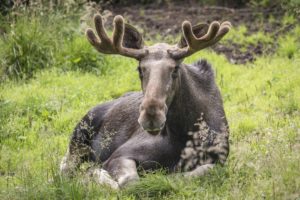
Did you know…
Did you know that the male moose grows new antlers every year? The male moose sheds its antlers around the New Year’s, but the beginning of new antlers are quickly visible. The abundant food in the spring and the minerals in the water plants speed up the growing of new antlers. The antlers grow to their full size in the beginning of the fall, before the start of the mating season.





